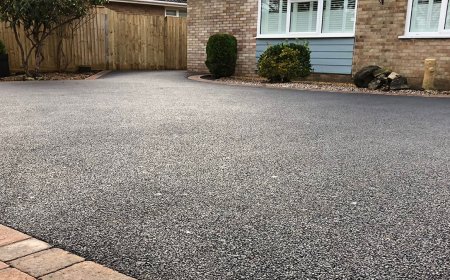Wood Laser Cleaner: A Deep Dive Into Precision Cleaning for Timber Surfaces
The question of whether a wood laser cleaner can strip layers without damaging delicate grain patterns may seem puzzling at first glance. After all, wood is an organic, often unpredictable material — with varying densities, resins, and surface finishes. Traditional sanding, chemical stripping, or media blasting often runs the risk of harming the natural characteristics of timber. But laser cleaning is rewriting the rulebook.

Lets explore how the wood laser cleaner has become an essential tool for artisans, restorers, and even industrial users who demand precision without compromise. This guide will give you a realistic, energetic, and practical walkthrough from what it is, how it works, and where it fits into real-world applications.
What Is a Wood Laser Cleaner?
A wood laser cleaner is a specialized laser system designed to remove contaminants, paint, coatings, or carbonization from the surface of wooden objects using controlled bursts of laser energy. Unlike tools that rely on friction, pressure, or solvents, the laser beam vaporizes unwanted layers through a process called ablation leaving the underlying wood intact if used correctly.
This cleaning method is contactless and non-abrasive, relying on fine-tuned settings to manage beam intensity, focus, and scan speed. That means you can adjust how deep or gentle the cleaning action should be.
Why Is Laser Cleaning Used on Wood?
Wood surfaces whether antique, raw, or coated are sensitive. They respond poorly to over-sanding, water-based chemicals, or high-pressure blasting. The wood laser cleaner offers a highly targeted method for:
-
Removing paint or varnish from old furniture
-
Cleaning charred or smoke-damaged timber
-
Preparing surface for re-coating without thinning
-
Restoring architectural woodwork and sculptures
-
Decontaminating wood used in industrial molds or tooling
In each of these use-cases, control is everything. You don't want to strip away history or burn into the grain. You want clarity, not destruction.
How Does a Wood Laser Cleaner Work on Delicate Grain?
The magic lies in pulse control and scanning motion. Unlike metal or stone, wood reacts faster to thermal energy. A pulse duration thats too long, or energy density thats too high, may scorch the fibers or cause micro-cracking. Thats why professional systems calibrate:
-
Pulse frequency determines how often the laser fires per second
-
Power level (Wattage) adjusts the depth and aggressiveness
-
Beam diameter changes the focus area
-
Cleaning speed slower speeds mean more exposure
For example, a 100W laser system may be enough to clean smoke residue from pine panels. But restoring layered varnish from antique oak might require a 200W machine with a slower pass rate and a defocused beam.
The goal isnt to erase the past but to reveal the beauty beneath the grime.
What Surfaces and Projects Are Ideal for Laser Wood Cleaning?
The wood laser cleaner is not a one-size-fits-all solution. Its true value shows up in jobs where precision matters more than speed. Youll often find laser cleaning systems used in:
1. Furniture Restoration
Think of old heirlooms covered in decades of lacquer, wax, or smoke buildup. Sanding might round off edges or remove carving detail. A laser can target these residues selectively.
2. Architectural Elements
Old beams, decorative trims, and window frames often have layers of flaking paint or mildew. Using a wood laser cleaner here means controlled treatment that doesnt risk structural compromise.
3. Fire-Damaged Wood
Char removal is one of the most popular uses. Lasers clean away carbon layers without needing harsh scrubbing especially useful in heritage conservation after smoke or soot exposure.
4. Tooling and Industrial Forms
Some high-end wooden molds or casting surfaces require decontamination before reuse. Laser cleaning helps in removing resin or mold release agents.
What Kind of Laser Is Best for Wood?
Fiber lasers are the most common in industrial use, but theyre usually suited for metals. For wood, systems using:
-
Pulsed fiber lasers (low to mid wattage)
-
CO2 lasers (especially for engraving or surface vaporization)
CO2 lasers operate in the infrared spectrum and interact well with organic materials like wood. However, newer pulse-based fiber systems with lower fluence (energy per unit area) and high repetition rate can also work.
Again, its not just about power. Its about the pulse width, repetition rate, and scan control.
Safety and Handling: What to Keep in Mind
Using a wood laser cleaner involves more than pointing a beam and pushing a button. Wood can release volatile organic compounds (VOCs) when heated, so:
-
Use ventilation or fume extraction
-
Wear proper laser safety goggles
-
Maintain correct focal distance
-
Avoid using high settings on softwoods
-
Monitor the materials response continuously
Also, keep in mind that wood color may slightly change due to exposure especially on prolonged or repeated passes.
Cost Implications and Operational Investment
Lets talk realistically: these machines arent cheap. Entry-level laser cleaning systems start around $10,000 and can go up based on power, optics, and software features. However, if youre operating a restoration business, museum lab, or artisan shop, the return on precision, efficiency, and reduced labor hours can be significant.
Laser cleaning removes the need for repeat sanding, chemical soaking, or labor-intensive scraping. That saves time, reduces rework, and maintains the integrity of wooden items.
Real-World Scenario: Smoke-Damaged Oak Paneling
An interior restoration company was tasked with refurbishing a historic church after fire damage. The wooden panels were blackened but structurally intact. Traditional cleaning methods caused more harm than good, lifting splinters and smearing residue.
A 150W pulsed wood laser cleaner was used on-site. By adjusting the beam diameter and running test passes, they identified the right settings to remove carbon layers without penetrating the surface. The results?
-
No need to replace original wood
-
Reduced cleaning time by 60%
-
Preserved patina and character
This job saved thousands in material costs and helped secure a long-term contract for the restoration team.
Final Thoughts
The wood laser cleaner represents a new era of timber care and restoration. Its not a replacement for every cleaning method but stands out where detail, delicacy, and history are on the line. From antique furniture to charred beams, it provides a powerful yet refined tool to renew without risk.
By tuning your machine to match the woods personality whether oak, pine, or walnut youll discover how laser energy can become a brush, not a blade. For restorers, artisans, and professionals alike, its not just about what you remove, but how much you protect.
















![Top 9 Real Estate Mobile App Developers in Riyadh, Saudi Arabia [2025 Edition]](https://www.biphoo.uk/uploads/images/202507/image_430x256_6879d0d524335.jpg)





















